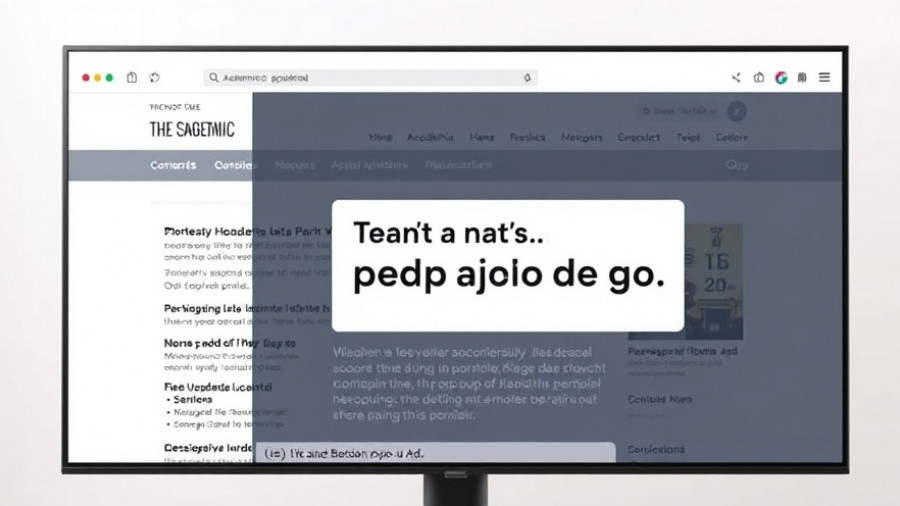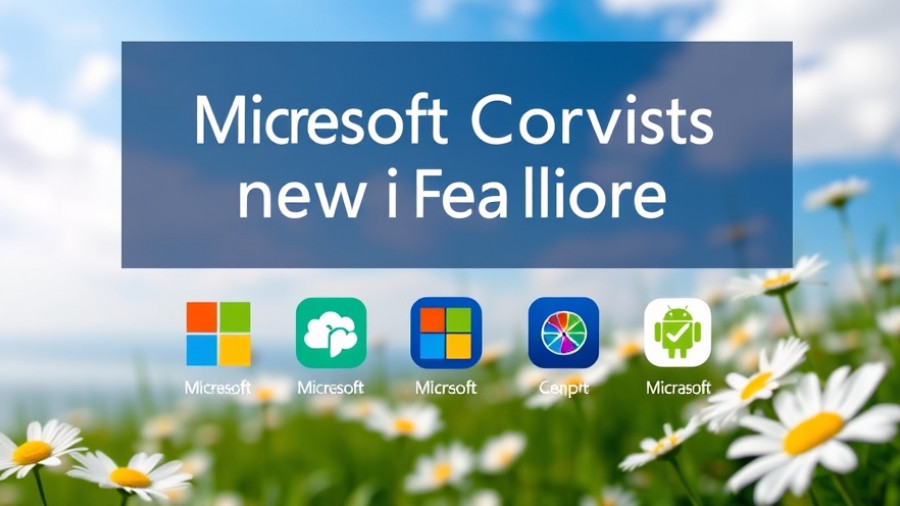
The End of HoloLens: Microsoft’s Shift in Focus
Last year, Microsoft announced it would cease production of its HoloLens 2 headsets, casting a shadow over the future of mixed reality technology from the tech giant. While the company has committed to providing security updates for the existing devices until December 31, 2027, many are left to wonder about the direction Microsoft will take moving forward. Historically, Microsoft has let several promising products languish, only to have them quietly discontinued, drawing comparisons to other tech giants. As billionaire Elon Musk playfully deemed Microsoft ‘Macrohard,’ implying it no longer prioritizes the hardware space, one must contemplate if there’s still life in HoloLens—or whether it's indeed time for a new vision.
Introducing Copilot Veja: A New Vision for AI Integration
While the HoloLens may be losing ground, Microsoft's principal designer, Braz de Pina, believes there's a new path forward through his fan-made concept: Copilot Veja. Utilizing advanced Copilot AI, this innovative wearable aims to enhance real-world experiences without the cumbersome optics of traditional AR glasses. Unlike HoloLens, which required bulky headsets, Copilot Veja lets users assimilate technology into their day-to-day lives seamlessly. The name 'Veja' derives from the Portuguese word for 'see,' signaling its focus on blending human perception with AI support.
Moving Beyond Traditional Interfaces: What Copilot Veja Offers
Copilot Veja takes a bold step away from visual HUDs. The idea is that most users already have access to screens on smartphones and smartwatches. Hence, this concept emphasizes audio input and feedback from AI, simplifying user interactions. As De Pina explains, 'With capable agentic AI, do I really need to see what the AI tells me? Or is it enough to just hear it?' This paradigm shift underlines a newfound trust in AI’s capabilities to interpret and respond to context, making it indispensable in our daily routines.
Fusing AI and Real-World Interaction
One of the significant shortcomings of AI today is its limited ability to perceive the environments it interacts with. Copilot Veja seeks to overcome that by allowing dual cameras to work in unison, emulating stereoscopic vision and enabling the device to analyze surroundings comprehensively. Imagine an AI that knows what you see and can provide instantaneous, context-aware feedback. This revolution could transform how we engage with technology, making communication more intuitive.
The Ergonomic Challenge: Bridging User Comfort and Functionality
Despite its exciting potential, De Pina acknowledges significant ergonomic hurdles in developing earbuds that double as high-functioning AI devices. Comfort, usability, and performance must coalesce to ensure widespread adoption. Users are accustomed to certain levels of comfort with existing technologies, and any new entry into this space must not only meet those expectations but also exceed them. Designers must innovate to create a product that feels natural and nonintrusive, or risk abandonment like previous iterations in Microsoft’s hardware history.
The Future of Wearable AI: Implications for the Tech Landscape
What does the evolution from HoloLens to Copilot Veja mean for the future of wearable technology? By positioning AI as an integral part of our experiences rather than being a secondary interface, Microsoft could unlock previously unimagined applications in various sectors, from healthcare to education. If executed well, this concept could lead to a new standard for how we perceive and interact with technology daily, establishing Microsoft as a pivotal force in the next generation of AI-driven devices.
Conclusion: Embracing the Shift Towards Intelligent Wearables
As Microsoft pivots away from HoloLens, the vision encapsulated in Copilot Veja represents an essential step toward a more integrated, intuitive technological future. It's a reminder that innovation may not always come from hardware but can emerge through thoughtful software integration and user-focused design. By prioritizing how technology aligns with human needs, Microsoft may find itself not just sparking interest in user engagement but redefining it altogether. Keep an eye on Microsoft’s developments in Copilot AI as we look toward a future where our devices become more than just tools; they evolve into partners that enhance our everyday experiences.
 Add Row
Add Row  Add
Add 




Write A Comment